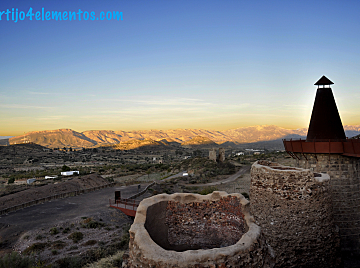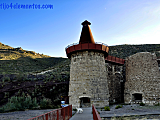Calcination ovens, Lucainena de las Torres, Almería
The calcination ovens in Lucainena de las Torres represent one of the most important architectural remains of the times when this town had great relevance within the provincial economy. It was a very important mining enclave from which iron was supplied to the High Ovens of Vizcaya, in Bilbao. The ore was evacuated by rail through the Agua Amarga, in Níjar.
To be able to do this, the old Sierra Alhamilla Mining Company began building new calcination ovens in 1900, in a place close to the Lucainena railway station. A year later the company decided to build another six ovens next to the previous two, given the absolute supremacy of carbonates in the production of the mines.
The wagons dumped the ore in a deposit and after undergoing a slight manual selection, the useful part was loaded into side-loading wagons that took it to the top of the ovens, which they accessed from platforms.
Each oven was about 20 meters high and its capacity was 50 tons of calcined ore per oven, per day. Once the ore was calcined, it was loaded into wagons that transported it to the Lucainena station from where the train left for Agua Amarga.
In one of the ovens (the first one we found after arriving at the facilities), its original structure has been recovered. The rehabilitated one is equipped with a staircase through which the upper part can be accessed. From there a wide panoramic view, of both the other ovens and the Lucainena valley, can be seen. The place has been conditioned and equipped with a parking.
Nowadays its function runs on the tourist plane. For the public that is curious to know more about the history of the towns of the interior of Almería and for its position linked to mining tourism, to that of the Green Track, it is a logical tourist complement for those who want to do the hiking.















